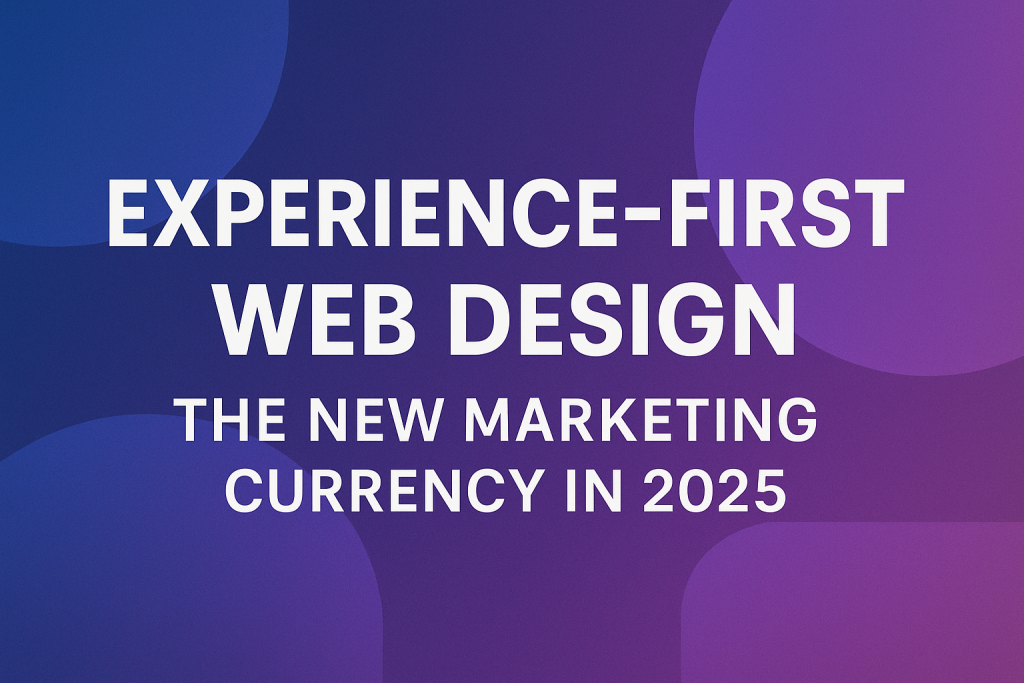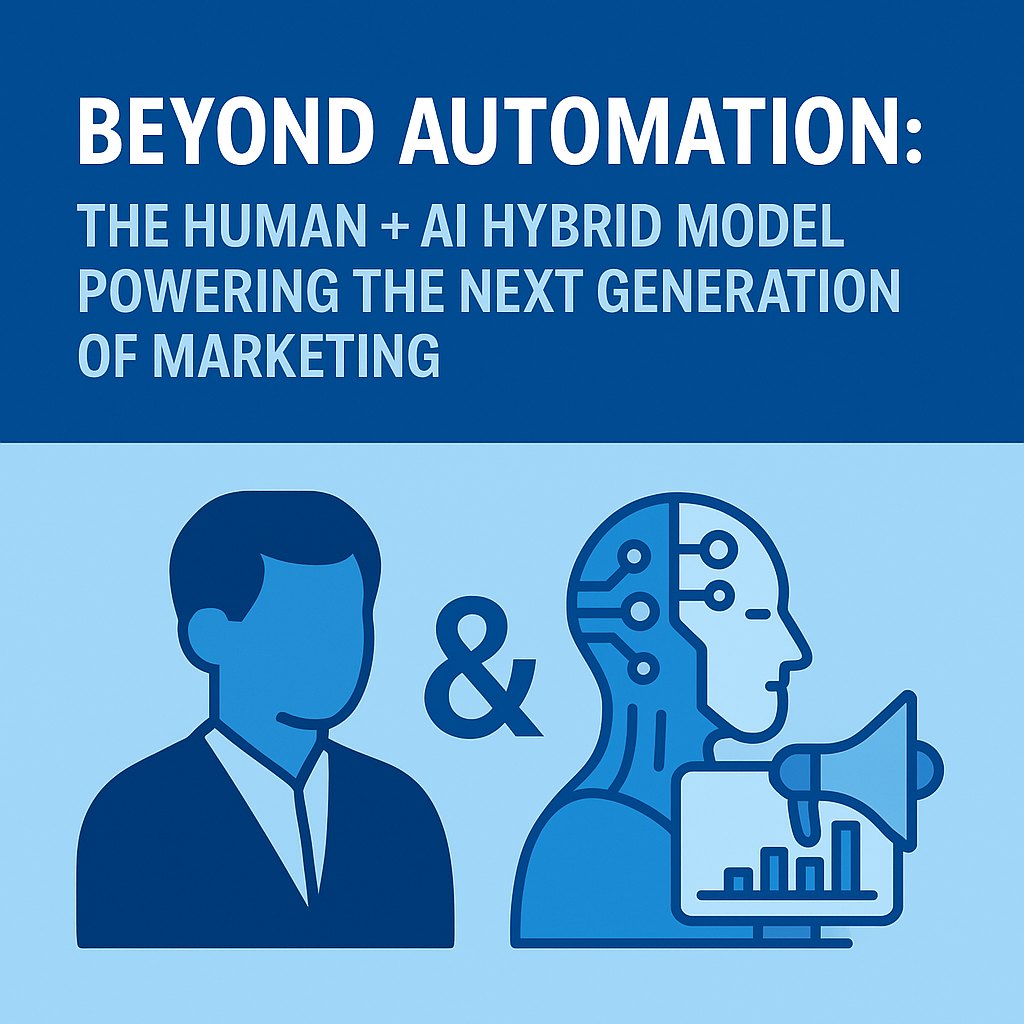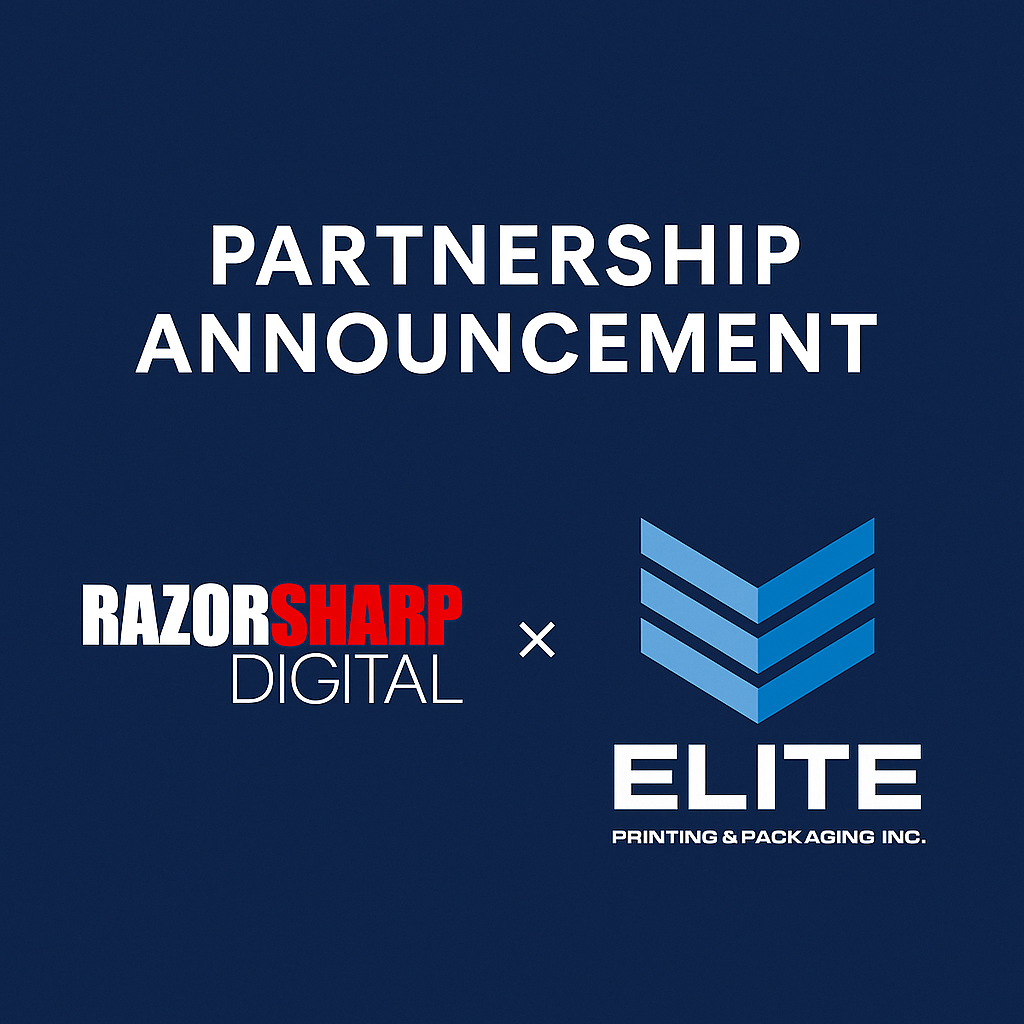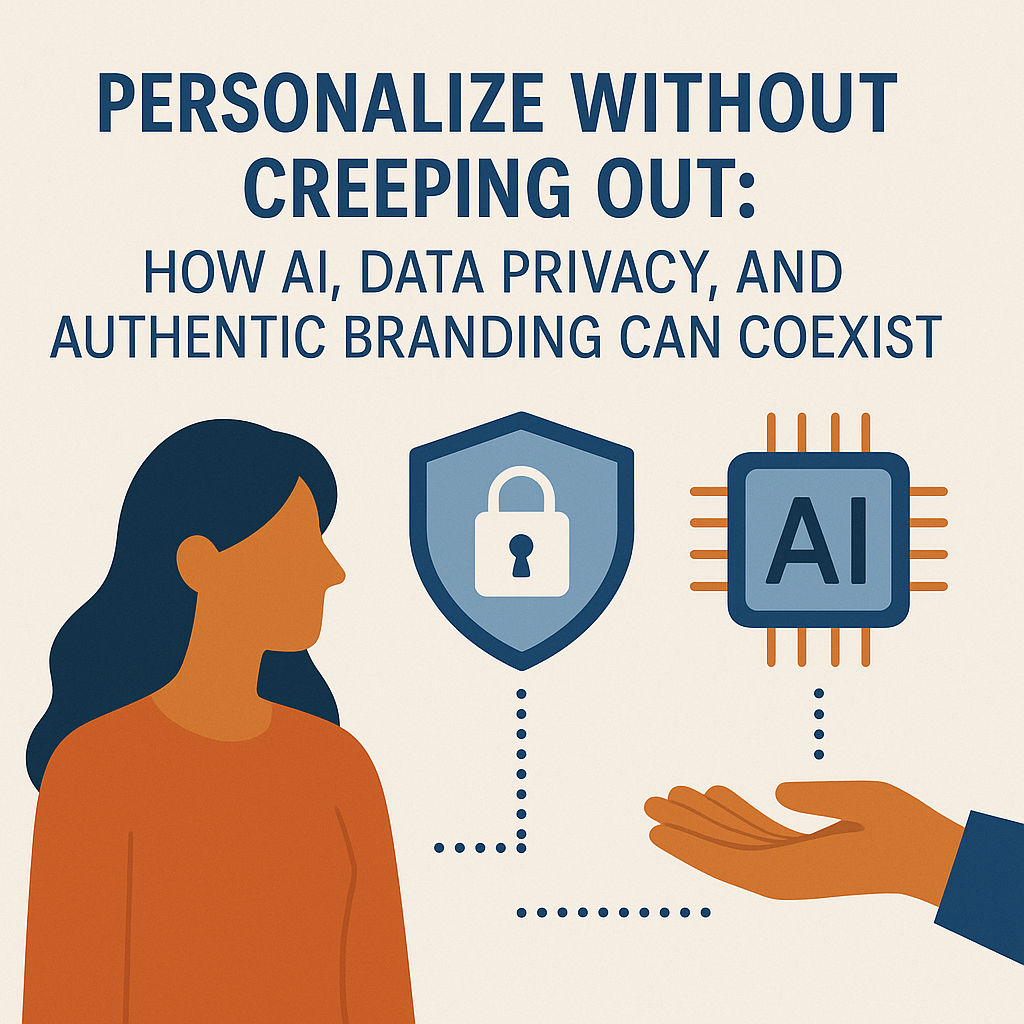Welcome to the era of experience-first web design—the new marketing currency shaping the future of digital success.
Why Experience Is the New Currency
In a marketplace where customers are drowning in content, ads, notifications, and AI-generated noise, brands can no longer win on aesthetics or clever messaging alone. People make decisions based on emotions, trust, and the path of least resistance.
Experience is now the differentiator.
Experience creates:
Longer session durations
Higher engagement
Stronger emotional connection
Higher credibility
More conversions
In 2025, experience has become the true competitive advantage.
The Shift From Aesthetic-First to Experience-First
For years, web design conversations sounded like this:
“What color palette should we use?”
“What kind of hero image looks best?”
“Should the buttons be round or square?”
None of those questions mattered if the user couldn’t find what they needed, didn’t trust the page, or couldn’t take action easily.
The 2025 landscape has shifted from:
Pretty → Purposeful
Design trends → Data-backed UX
Pages → Experiences
Features → Outcomes
Experience-first design asks two questions on every page:
How does the user feel?
What action should be effortless here?
Because in the end, design without friction beats design without direction every time.
The Rise of the Experience Economy
Customers are no longer exchanging money for products; they’re exchanging money for the experiences they believe the brand will deliver.
Think about:
Apple: simplification
Airbnb: belonging
Nike: empowerment
Amazon: convenience
Tesla: innovation
Your website is expected to reflect the same level of intentionality.
In 2025, users don’t tolerate:
Slow pages
Confusing navigation
Outdated UI
Non-mobile-friendly layouts
Unclear messaging
They simply move on.
Experience-first web design ensures that every interaction adds value.
Key Principles of Experience-First Web Design in 2025
Experience-first design isn’t a theory. It’s a framework grounded in data, behavioral psychology, and user-driven decision-making.
Here are the pillars defining 2025-era experience design:
1. Emotional UX: Design That Speaks to Humans
AI is everywhere now—but what still sets brands apart is emotion.
Emotional UX considers:
Tone
Color psychology
Narrative flow
Visual hierarchy
Micro-interactions that create delight
Experience designers in 2025 craft emotional touchpoints intentionally:
A welcoming hero headline
A video that tells the story
Scroll-triggered animations that guide the eye
Personalized content based on behavior
Emotion drives behavior. Behavior drives conversion.
2. Clarity Over Creativity
Confusion kills conversions faster than bad design.
Experience-first design prioritizes:
Clear navigation
Predictable layouts
Straightforward CTAs
Intuitive information architecture
The new rule is:
If a 6th grader can’t understand the page in 5 seconds, it’s too complicated.
Creativity matters—but not at the expense of clarity.
3. Performance as a Core Experience Metric
Speed is the new luxury.
According to 2025 benchmarks:
Websites that load in under 1 second convert 3–4× better
Pages that exceed 3 seconds lose 50% of mobile users
Performance directly impacts SEO, trust, and brand perception
Experience-first design requires:
Image compression
Adaptive image formats (WebP, AVIF)
Lightweight frameworks
Prioritized rendering
Minified scripts
Server-side caching
Performance is user experience.
4. Personalization Powered by AI
AI is redefining the way users experience your site.
Websites now adapt in real time:
Personalized product recommendations
Behavioral-based CTAs
Predictive search
User journey optimization
Custom content blocks based on interests
2025 websites feel less like digital brochures and more like digital concierges.
Personalization is no longer optional—it’s expected.
5. Mobile-First Is Now Mobile-Dominant
In 2025, more than 80% of user sessions start on mobile.
Experience-first design demands:
Thumb-friendly layouts
Sticky CTAs
Large tap targets
Fast-loading mobile pages
Mobile-optimized navigation
Your website shouldn’t just shrink to fit a smartphone—
it should perform better on one.
Mobile now dictates the entire design system.
6. Story-Driven Messaging
Your brand story isn’t fluff—it’s strategy.
Experience-first design weaves storytelling throughout:
Hero copy that communicates transformation
Consistent tone across the entire site
Brand promises that build trust
Mission statements that resonate
Testimonials that reinforce outcomes
People remember stories.
People trust stories.
People buy because of stories.
7. Conversion Experience (CX) Design
2025 websites aren’t built for traffic.
They’re built for action.
CX design blends UX + behavioral psychology to make every conversion effortless:
Frictionless forms
Single-step CTAs
Social proof placement
Trust badges
Persuasive microcopy
Checkout optimization
Scroll-activated CTAs
Sticky navigation
The experience must guide the user naturally into saying “yes.”
How Experience-First Websites Increase Revenue
Your website is either a cost center… or a profit center.
Experience-first design turns it into the latter.
It increases:
Time on page
Lead quality
Conversion rates
Lifetime value
Repeat engagement
Word-of-mouth referrals
It decreases:
Bounce rate
Cart abandonment
Friction points
Confusion
Support requests
When the user wins, the business wins.
2025 Trends Powering Experience-First Web Design
Let’s break down the specific trends driving the movement in 2025.
1. AI-Generated Layout Optimization
AI heatmaps now predict user behavior before a site is even launched. Tools like generative UX modeling show:
Where users will look
What they will click
Where friction will occur
This allows teams to optimize experiences pre-launch, not reactively.
2. Zero-Click Journey Mapping
With AI engines, search results now deliver answers before the click—so websites must create deeper post-click experiences that aren’t easily replicated.
This includes:
Rich media
Interactive tutorials
Self-guided demos
Proprietary tools
Community features
Websites no longer compete with competitors—they compete with the search engine itself.
3. Immersive Micro-Experiences
Micro-experiences are the future of engagement.
Examples:
Hover animation that reveals value
Scroll-triggered storytelling
Dynamic content blocks
Tap-to-reveal features
Bite-sized video loops embedded in hero sections
These subtle moments keep users absorbed.
4. Accessibility as a Ranking Signal
Accessibility is no longer a nice-to-have—it’s a requirement.
This includes:
Alt text
High contrast
Keyboard navigation
Logical tab order
ARIA labels
Adaptive interactions
Experience-first means experience for everyone.
5. Conversion-Led Navigation
Menus are now designed to drive conversions—not to list everything.
2025 navigation is:
Simplified
Category-driven
CTA-reinforced
Split by audience type
Optimized to reduce choice overload
Navigation should empower, not overwhelm.
Why Experience-First Web Design Dominates SEO in 2025
Search engines are smarter than ever—and their algorithms now evaluate experience quality, not fluff.
Google, Bing, Perplexity, and AI-driven engines measure:
Engagement
Scroll depth
Page speed
Content clarity
Mobile performance
Interaction patterns
User satisfaction signals
Better experience → higher rankings → more conversions.
Experience is an SEO strategy.
Building an Experience-First Website: A Step-By-Step Blueprint
If you’re redesigning your website or optimizing an existing one, here’s the 2025-ready blueprint:
Step 1: Clarify the Purpose
Every page must answer:
What does the user want here?
What is the desired action?
Purpose drives structure. Structure drives outcome.
Step 2: Map the Customer Journey
Identify:
Entry points
Motivations
Intent states
Objections
Conversion triggers
Then design pages that guide users smoothly through that journey.
Step 3: Craft the Messaging Hierarchy
Your message must be:
Clear
Human
Value-driven
Emotionally resonant
Lead with outcomes. Support with proof.
Step 4: Design for Simplicity
Minimalism isn’t a trend—it’s a conversion strategy.
If it doesn’t improve experience, remove it.
Step 5: Develop for Performance
The backend must match the frontend.
Fast > Fancy.
Step 6: Personalize Everything
Use AI and behavioral data to adapt the experience.
Dynamic content is the norm.
Step 7: Test, Optimize, Repeat
Experience-first design is never done.
It evolves.
The Business Case: Why Experience-First Design Boosts Growth
When your website delivers a world-class experience, every marketing channel improves:
SEO performance increases
Paid ads convert at a lower cost
Social traffic sticks longer
Email traffic engages deeper
Referral traffic converts better
Experience is the multiplier that improves everything else.
Your Website Is Now Your Experience Engine
In 2025, your website is no longer a brochure, a portfolio, or a digital business card.
It is:
Your first impression
Your credibility builder
Your 24/7 salesperson
Your retention engine
Your brand experience hub
Your conversion machine
The brands winning this year are the brands that invest heavily in experience-first design—because experience is the new marketing currency.
If you want to grow, scale, and stand out, the path is clear:
Design for experience.
Develop for performance.
Build for the human on the other side of the screen.










